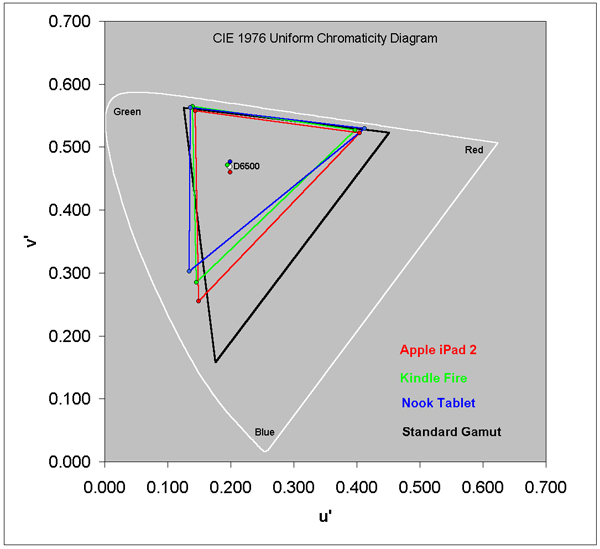Figure 2 shows the measured Color Gamuts for the Tablets along with the Standard Color Gamut in black. The outermost white curve is the limits of human color vision - the horseshoe is the pure spectral colors and the diagonal is the line of purples. A given display can only reproduce the colors that lie inside of the triangle formed by its primary colors. Highly saturated colors seldom occur in nature so the colors that are outside of the Standard Gamut are seldom needed and are unlikely to be noticed or missed in the overwhelming majority of real images. Note that consumer content does not include colors outside of the Standard Gamut, so a display with a wider Color Gamut cannot show colors that aren't in the original and only produce inaccurate exaggerated on-screen colors. The dots in the center are the measured color of White for each of the Tablets along with the D6500 Standard White, which is marked as a white circle.
To deliver accurate image colors for consumer photo and video content the display must match the Standard Color Gamut and the Standard Color of White. Note that too large a color gamut is actually visually worse than too small a color gamut because it produces gaudy colors that are over-saturated.
All of these LCD Tablets have a reduced Color Gamut due to weak Red and Blue primaries that result from the White LED Backlighting. It's an intentional tradeoff made to increase screen brightness, power efficiency and battery run time.
Note that the Nook Tablet has a lower saturation Blue primary. A weakness in Blue tends to add a yellowish tone to the images, unless it is calibrated out, which would then throw away some useful light - a bad idea for mobile devices. That's why the Nook Tablet has a yellowish White Point (above D6500). The iPad 2 does the opposite. Is has a more saturated blue and a bluish White Point (below D6500).
